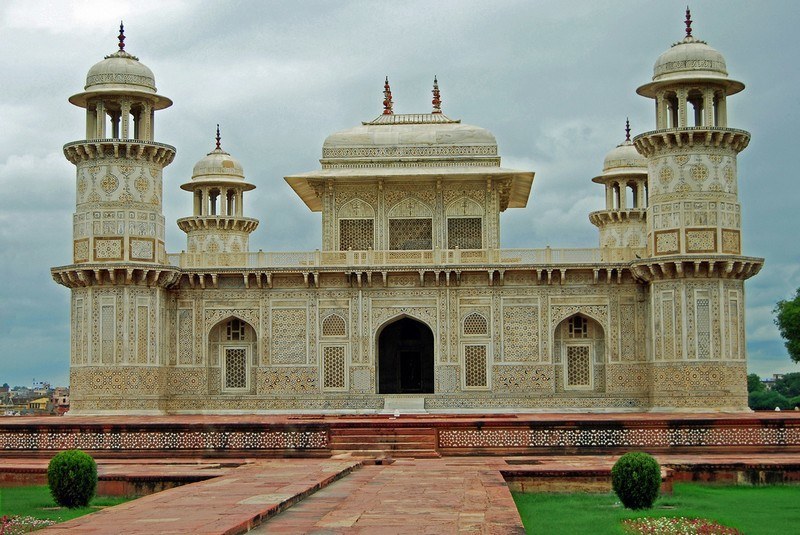The Tomb of I’timād-ud-Daulah, located in Agra, India, is one of the finest examples of Mughal architecture and is often referred to as the “Baby Taj.” Built between 1622 and 1628, it marks a significant departure from earlier Mughal tombs, introducing a new architectural style that laid the groundwork for the later construction of the iconic Taj Mahal.
Commissioned by Empress Nur Jahan, the wife of Emperor Jahangir, the tomb was constructed in memory of her father, Mirza Ghiyas Beg, who held the title of I’timād-ud-Daulah, meaning “Pillar of the State.” Mirza Ghiyas Beg served as a trusted minister and treasurer in the Mughal court. Nur Jahan’s deep devotion to her father is reflected in the exquisite craftsmanship and attention to detail throughout the tomb.
Set on the banks of the Yamuna River, the tomb is housed within a beautifully maintained garden, laid out in the traditional charbagh (four-quartered) style. This Persian-style garden symbolizes paradise and was a popular feature in Mughal architecture. The tomb stands on a red sandstone plinth and is approached via a grand gateway. It is a square-shaped structure, flanked by four octagonal towers topped with domed pavilions or chhatris, lending it a balanced and elegant appearance.
The tomb’s architectural style is notable for its use of white marble inlayed with semi-precious stones, creating intricate floral and geometric patterns. This technique, known as pietra dura, reached its zenith in the Taj Mahal but was first introduced on a large scale in I’timād-ud-Daulah’s tomb. The use of marble instead of red sandstone, which was more common in earlier Mughal structures, marks an important evolution in Mughal architecture. The marble surfaces of the tomb are adorned with delicate carvings and latticework screens known as jali, which allow filtered light to enter the interior, creating an ethereal ambiance.
Inside the tomb, the cenotaphs of Mirza Ghiyas Beg and his wife Asmat Begum lie in a simple yet graceful chamber. The actual graves are in the crypt below, in accordance with Islamic traditions. The interiors are decorated with fine frescoes and calligraphy, showcasing the sophisticated artistry of the Mughal period.
The Tomb of I’timād-ud-Daulah is more than a mausoleum; it is a symbol of filial devotion, artistic refinement, and the architectural transition that would culminate in the creation of the Taj Mahal. Though smaller in scale, it exhibits a quiet elegance and intricate detail that rival the larger monuments of the era.
Today, the tomb is a popular tourist attraction in Agra, visited for its serene beauty, historical significance, and stunning craftsmanship. It stands as a testimony to the grandeur of Mughal art and the deep familial bonds that inspired its creation. In many ways, the tomb serves as a precursor and inspiration for what would become one of the Seven Wonders of the World.
